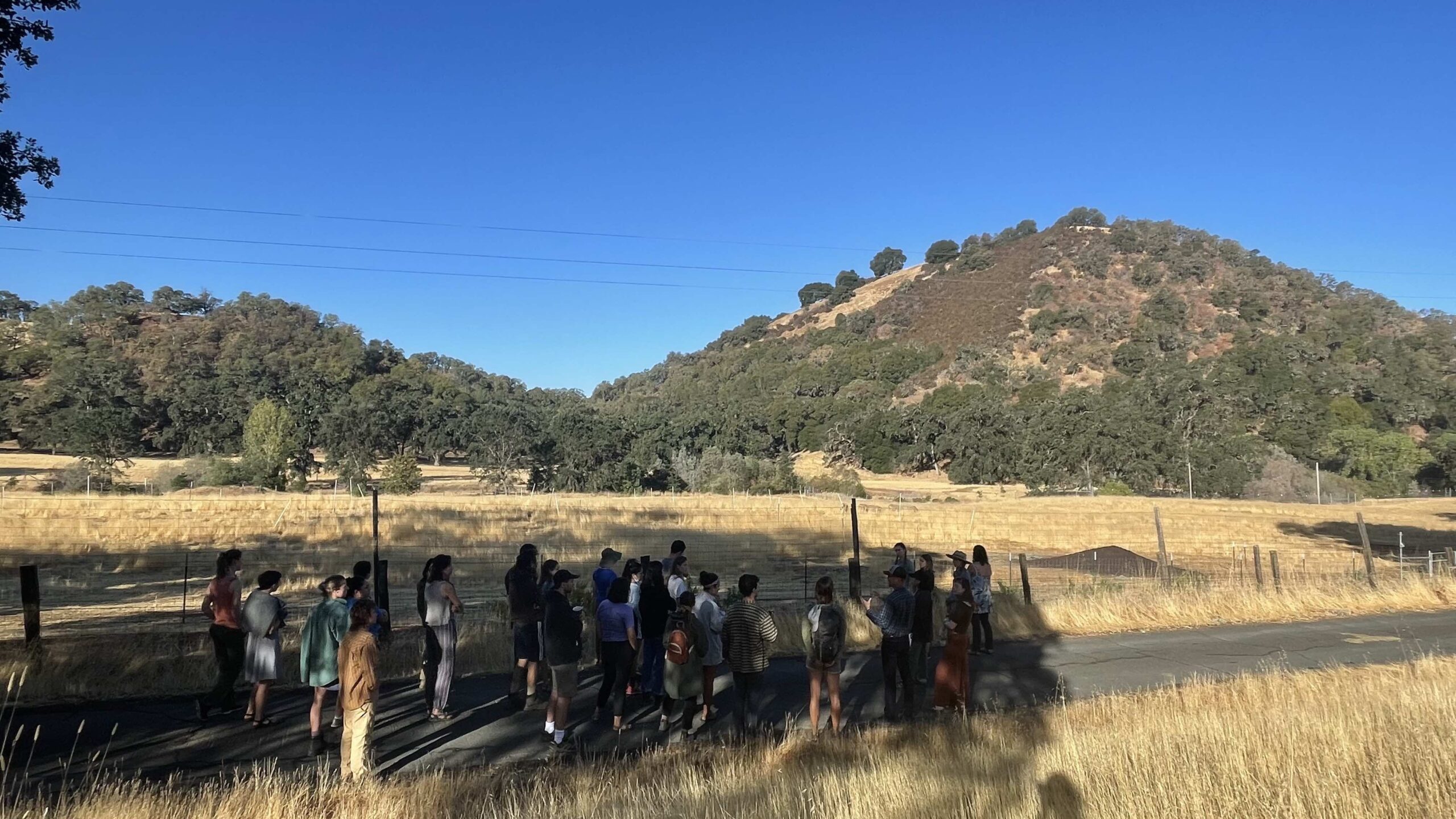
by GrizzlyCorps Fellow Mikayla Tran, originally posted on the GrizzlyCorps blog. Photo courtesy of GrizzlyCorps.
We’re so excited to work with Mikayla Tran as she delves into a complex water policy nexus related to our water program work! the GrizzlyCorps program is an important step on Mikayla’s journey as part of the next generation of environmental leaders, thinkers and innovators, and we’re so grateful to have her with us this year.
There is one key lesson that comes to mind when I reflect on the start of my fellowship year and a future career in public service: Planning is one thing, but implementation is another.
Though I don’t have much experience camping, it seems as if the universe loves to throw good news towards me when I’m in a camp-like environment. For example, I had just returned home from a leadership retreat in high school when I received the news that I had been accepted into UC Berkeley. Our recent GrizzlyCorps orientation was a similar camp-like experience, and it just so happened that the last day of our in-person orientation was also the score release date for those who had taken the Law School Admission Test (LSAT) back in August. As luck would have it, that nervous bunch of August test-takers included me.
And so, when Friday rolled around, my anxiety was the one to wake me first, an hour before my 6AM alarm. I sat in the dark, shared bedroom on a sleeping bag kindly offered by our site hosts, and I counted down the minutes until I could refresh my browser to see the score that had me awake at such an ungodly hour of the morning. I found myself at an interesting nexus of my post-graduate journey: physically present for a fellowship program that would challenge and indulge my environmental passions for the upcoming year, but mentally focused on a score result that would inform my legal journey for the following three years. I was on the brink of two new, exciting chapters of my life; and in this moment, it felt as if both were colliding on me at once.
Long story short, I was relieved to see a score that fit within my goal range once the magical release time rolled around, and I floated on a mystic cloud as our last day of in-person orientation began. I tell this story not to bore you with the details of my post-graduate life, but to comment on the relative simplicity of this experience. I had just met two key milestones: completing the GrizzlyCorps orientation and finishing the LSAT; yet, reflecting on it now, these milestones seem more like pebbles in a pond, small and simple.
Now that I had completed orientation, the real work with my host site was set to begin. Now that I secured a comfortable LSAT score, the law school application period was taking off with full speed. Orientation and getting my LSAT score were the easy parts. Now, the implementation phase was beginning to take shape.
So far, I’ve learned that the implementation phase is no easy feat. At my host site, Sustainable Conservation, I work with two key environmental policies: the Sustainable Groundwater Management Act (SGMA) and the Salt and Nitrate Programs arising from the Central Valley Salinity Alternatives for Long-Term Sustainability (CV-SALTS). Now is an exciting time for California’s water landscape, as we are starting to see what implementing these plans and projects really looks like on the ground.
In college, analyzing environmental policies felt nowhere similar to the work I am doing now. Policies that may have seemed dull in the classroom now take new shapes and dimensions that I never could have imagined. In a funny coincidence, one of my first background readings assigned at Sustainable Conservation was a Public Policy Institute of California (PPIC) report on “Water and the Future of the San Joaquin Valley.” Not even a year after graduating, I found myself using the same resource I had cited in undergraduate final papers and memos, but with an entirely different mindset. I was no longer confined to an academic bubble, but in a vast open space with resources such as PPIC to help me navigate it. This was both entirely frightening and deeply thrilling at the same time, as it was no longer a letter grade that was on the line, but the health of our communities and environment.
The California water landscape is fraught with infrastructure and conveyance problems, political tension, ecosystem fragility, and vulnerable communities at the forefront of climate change.
The more I dive into my work, the more consumed I am with the unique voices at all fronts of these issues. Unsurprisingly, I find myself with more questions now than when I started: Now that I have the basis of my background readings completed, how do I utilize this information on the ground? How do I communicate effectively with community members and stakeholders who share different interests, goals, and perspectives, even value systems? How do we create equitable outcomes for these two crucial policies while meaningfully connecting with people on different planes of thought?
If I am fortunate enough to continue a career in public interest, these are the same types of complicated, nuanced questions that I imagine will be boggling my mind for years to come. Whether I am fighting for reproductive choice or engaging in environmental policy or advocating for animal rights, I strive to not only be part of the decision-making of progressive policies and legislation, but to be fully engaged in the work of ensuring equitable outcomes on the ground. The work may not always be pretty, but it does come with the comfort in knowing that you’re doing something meaningful to you and your community.
So, to both my work in the Central Valley and the long months of law school applications ahead: let the implementation phase begin.
